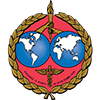
Worldwide News
Global trauma: the great divide
Paniker J, Graham SM & Harrison JW (2015) Global trauma: the great divide. SICOT-J, 1, 19
Abstract – Road trauma is an emergent global issue. There is huge disparity between the population affected by road trauma and the resource allocation. If the current trend continues, a predicted extra 5 million lives will be lost in this decade. This article aims to create an awareness of the scale of the problem of road trauma and the inequality in the resources available to address this problem. It also describes the responses from the international organisations and the orthopaedic community in dealing with this issue. The international orthopaedic community has a unique opportunity and moral obligation to play a part in changing this trend of global trauma.
Comment by Ahmed H. Abdelazeem - Cairo, Egypt
When I received an email alert with the new publication in our new open access journal, SICOT-J, titled ‘Global trauma: the great divide’ and as a person working in the trauma field in a developing country suffering from high trauma rates, I found myself very interested in reading this review article.
Just before reading it, I asked myself what I would expect from an article with this attractive title. I expected it to go through the discrepancies in Trauma: types, incidence and problems from the two points of view of developed and developing countries.
Going through this article I found much more than expected. The authors succeeded in covering every single point regarding this problem from both points of view. They started with an introduction explaining the current situation and future expectations. Moreover, they compared it with other global health problems, like HIV and malaria. International efforts concentrating on these health problems succeeded in doing something, but on the other side, the negligence of road trauma has led to a slow progress and worse situation.
The authors then covered a very critical item: the problem. In an organised way, they separated the problem into different categories, addressing each under a separate title. They analysed the problems: injury, deaths, socioeconomic impact and resources, in a very clear and illustrative way. They showed the huge discrepancy and the paradox between the expenditure on the trauma treatment and the incidence in the developed high income countries and the developing middle and low income countries. Calling for a solution was then addressed by the authors dividing the solution or what they called ‘the response’ into three different levels: increase awareness with improved trauma data collection, responsibilities and involvement from international organisations and governments and responsibilities on individual and small-scale levels.
They discussed the role of WHO and other organisations, including SICOT, in improving the global response to this epidemic.
I consider this review article as a key and an excellent reference addressing the road trauma problem. It covered all items that an orthopaedic surgeon working in this field wants to know. I also found that the figures and the tables were very useful and illustrative.
Finally, I would invite all members in our international society from all parts of the world to take 15 minutes of their time to read this article and understand where we are all going...

















